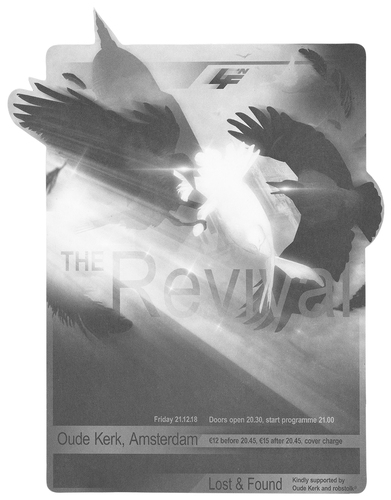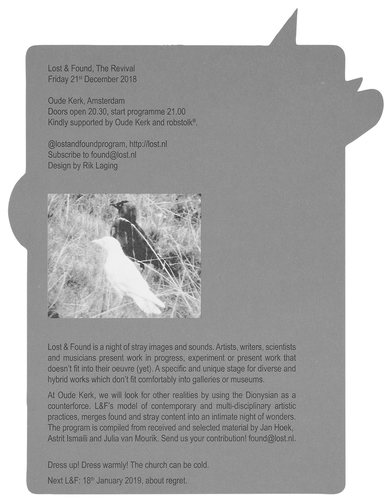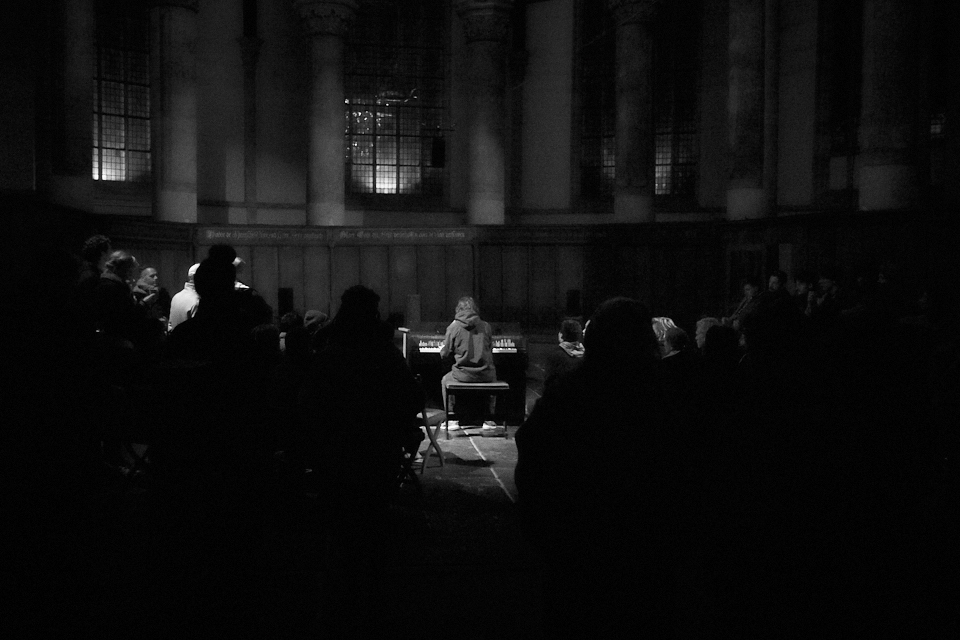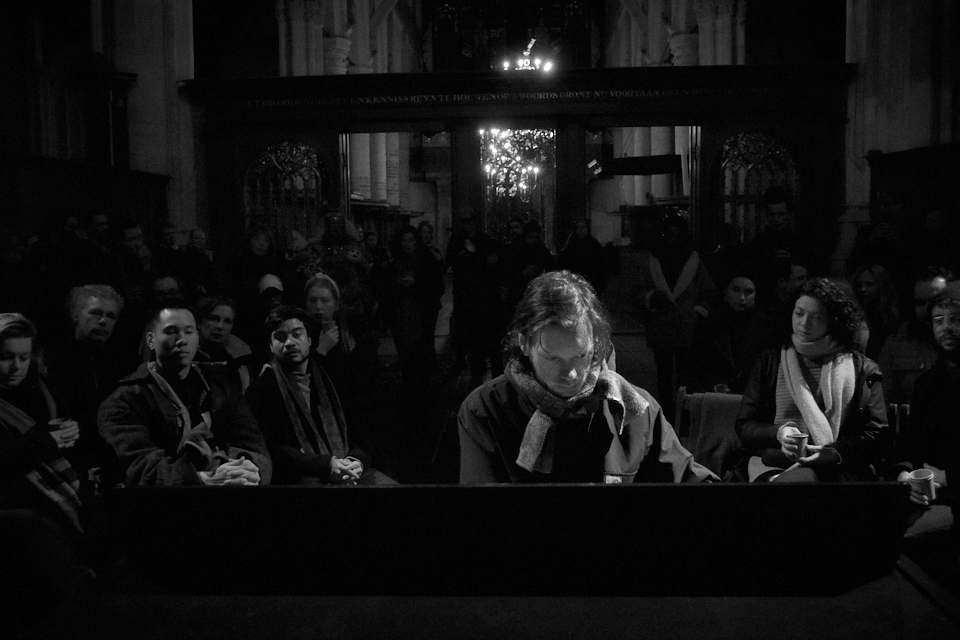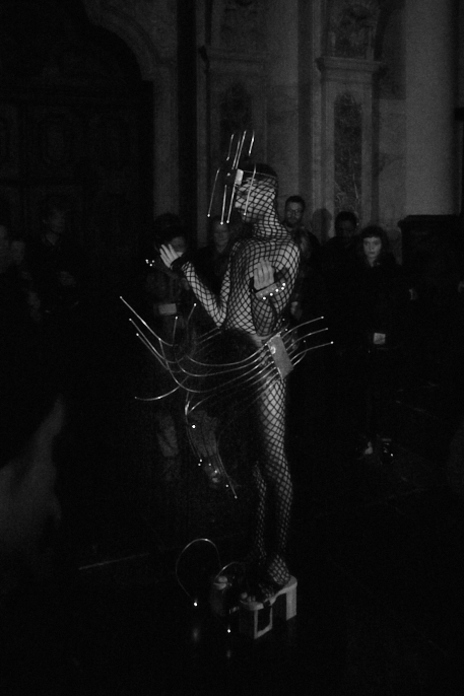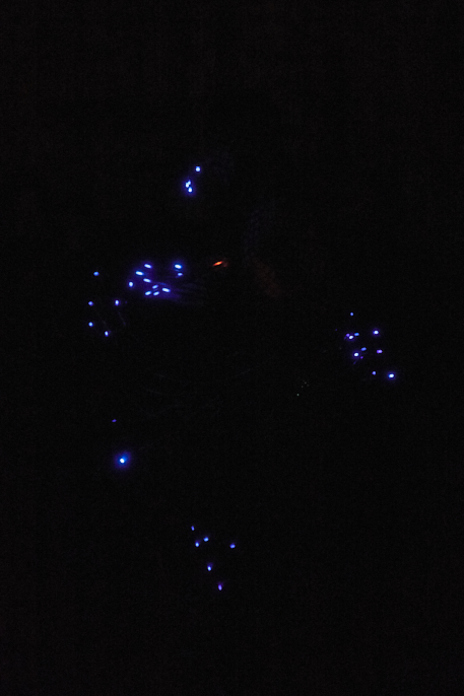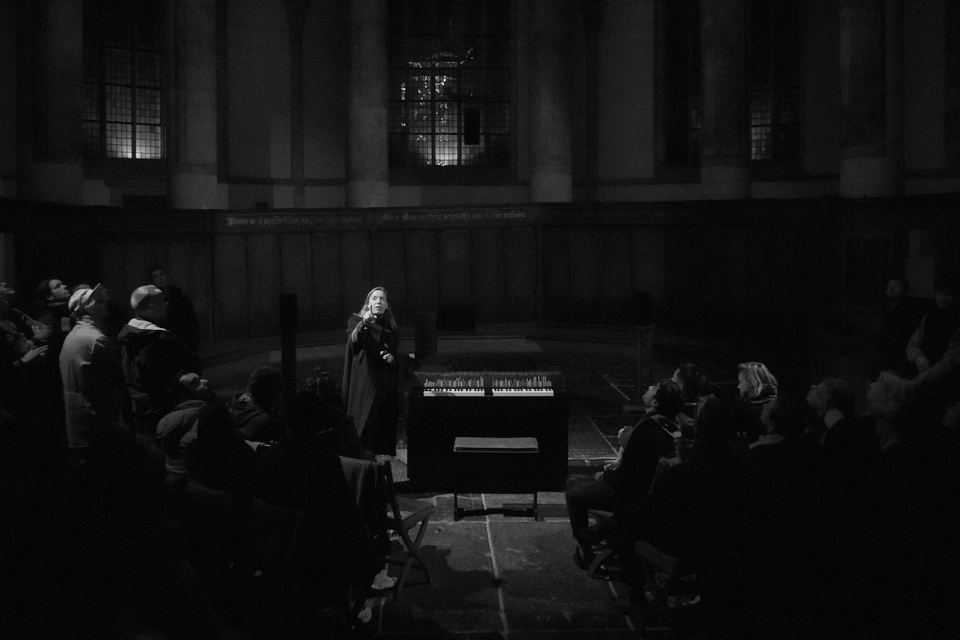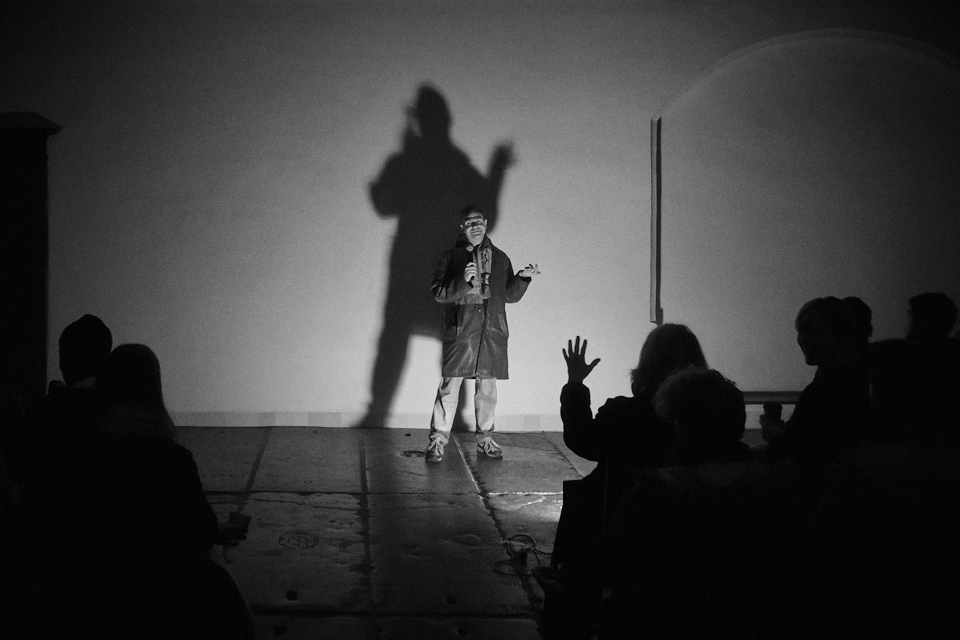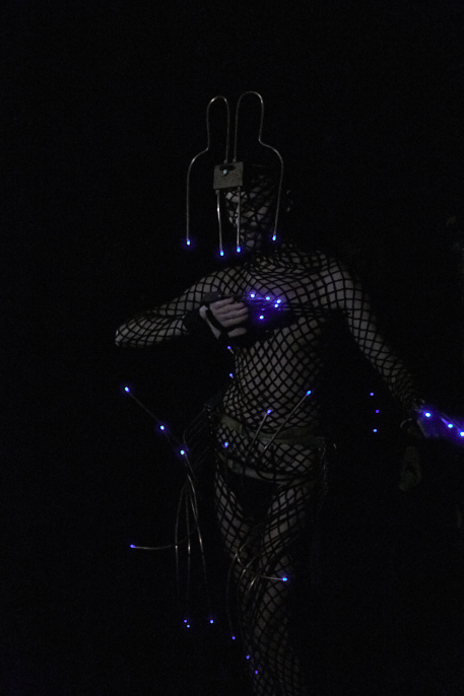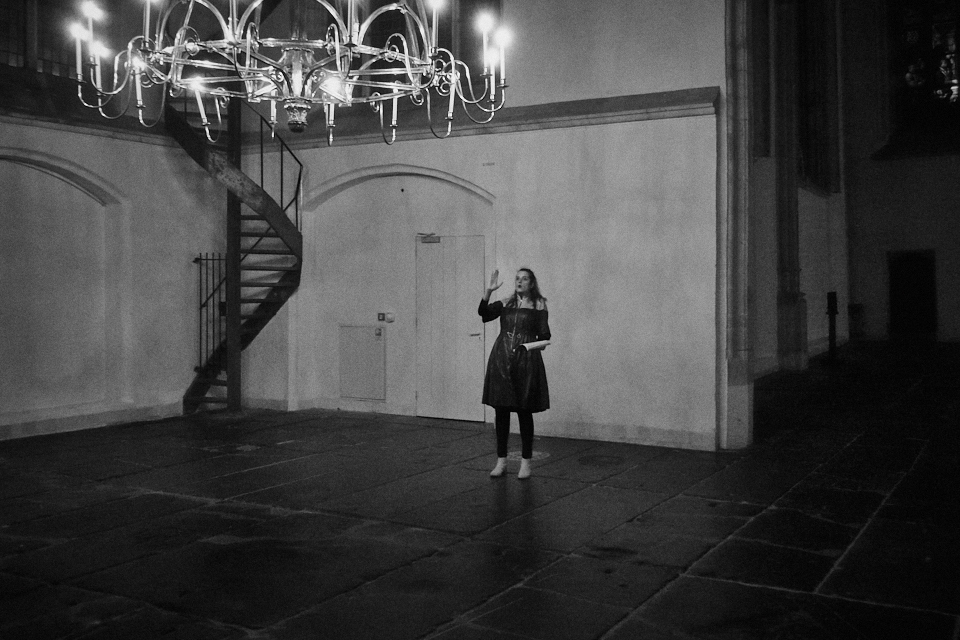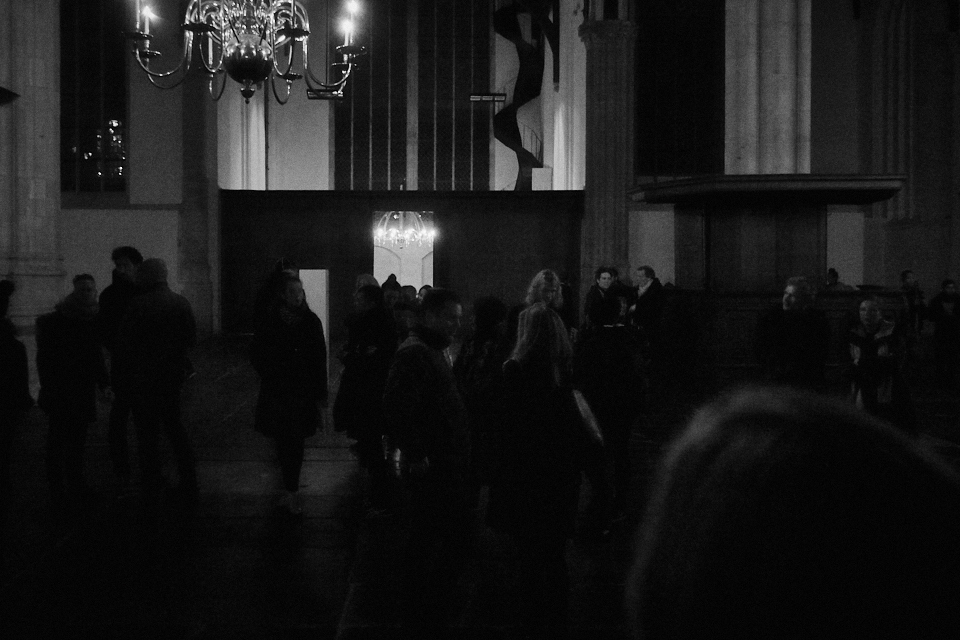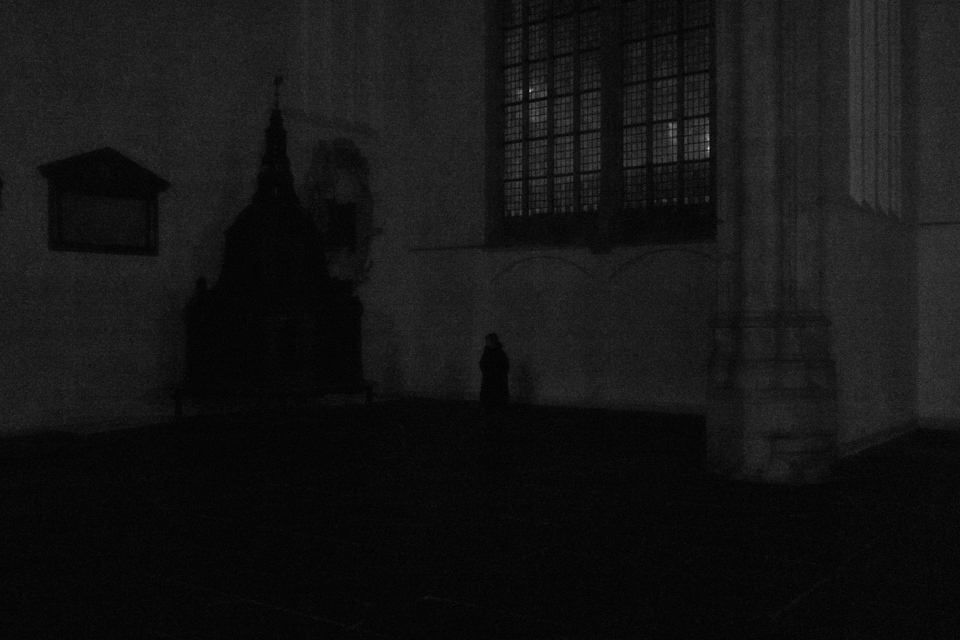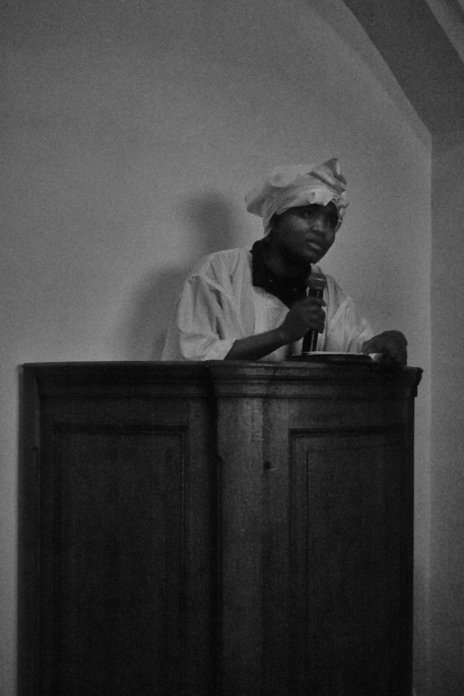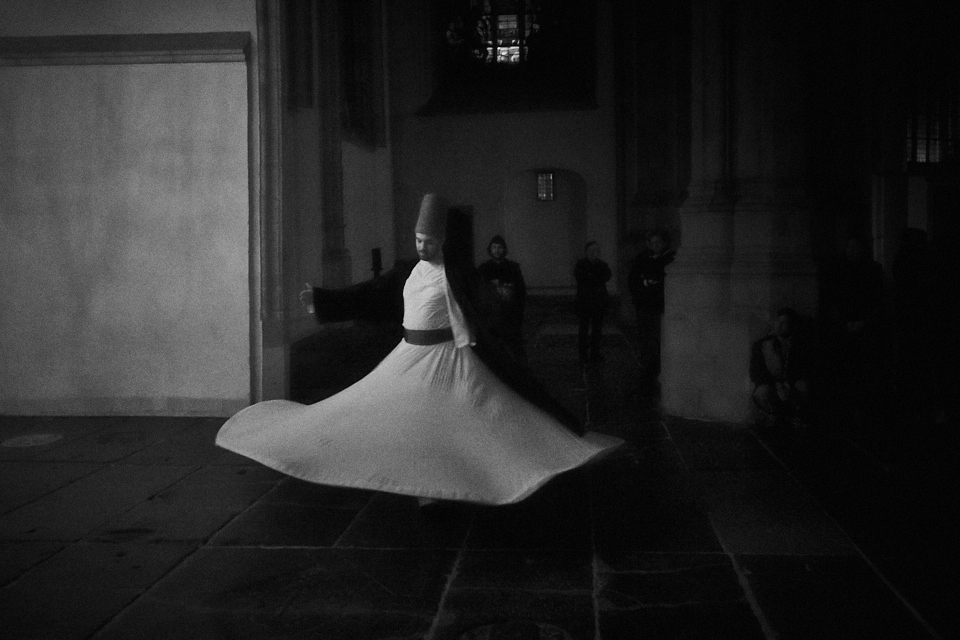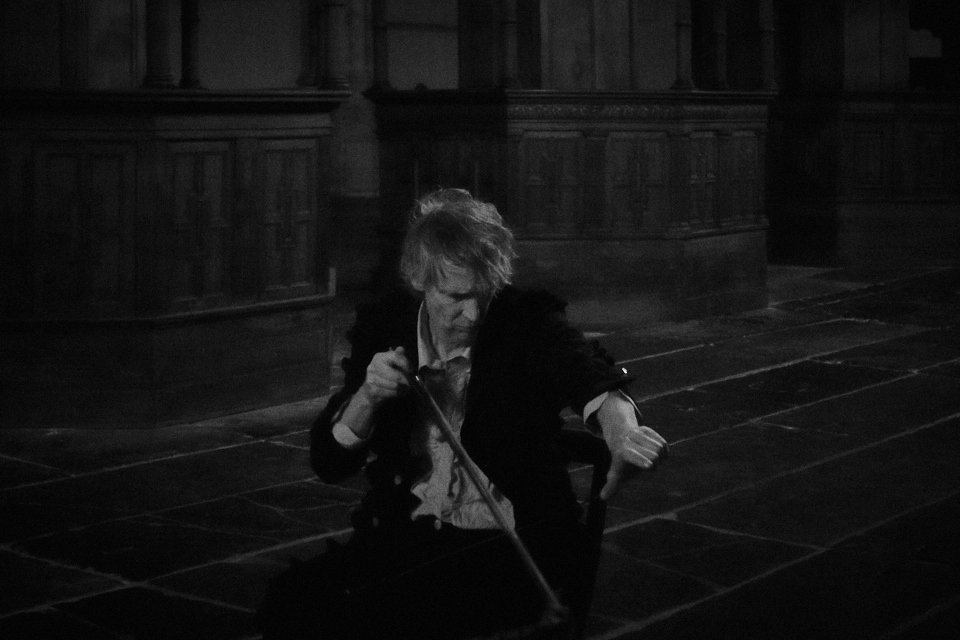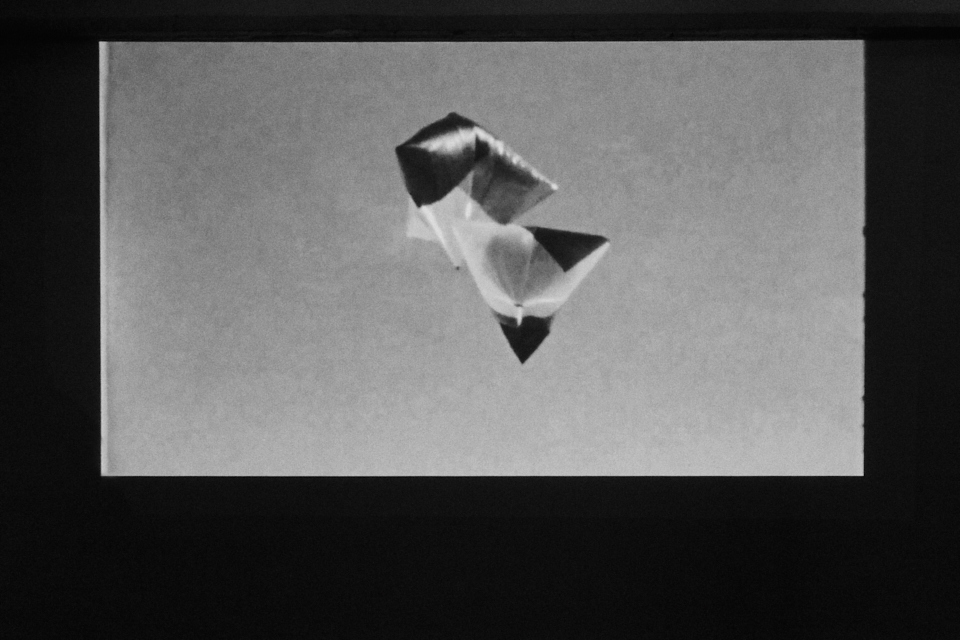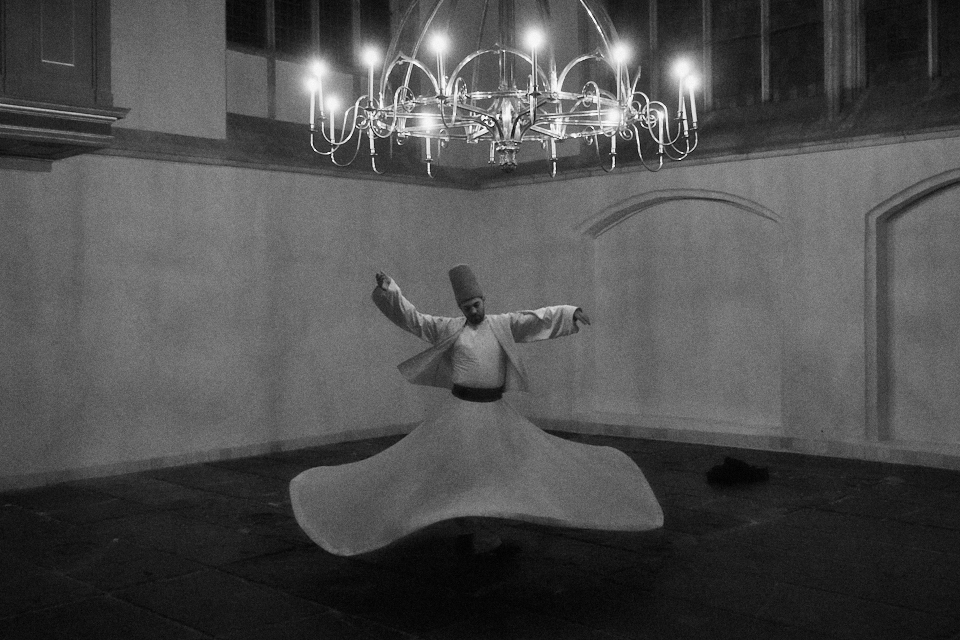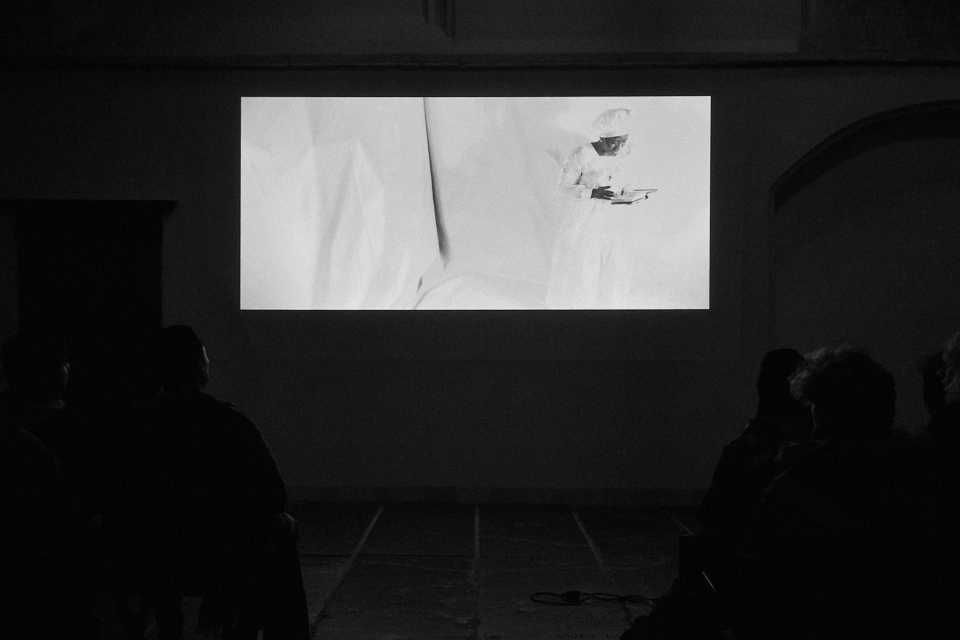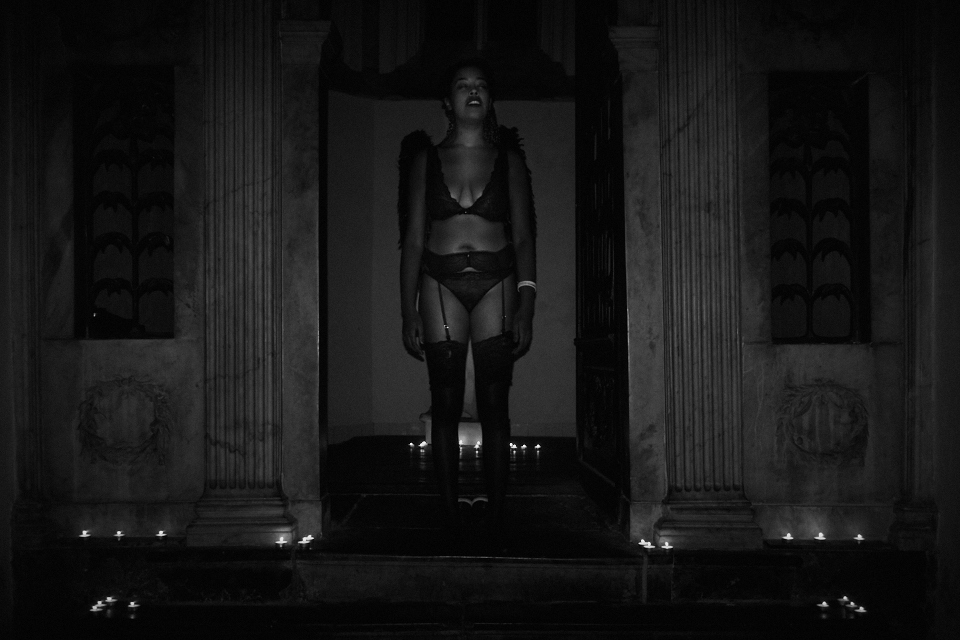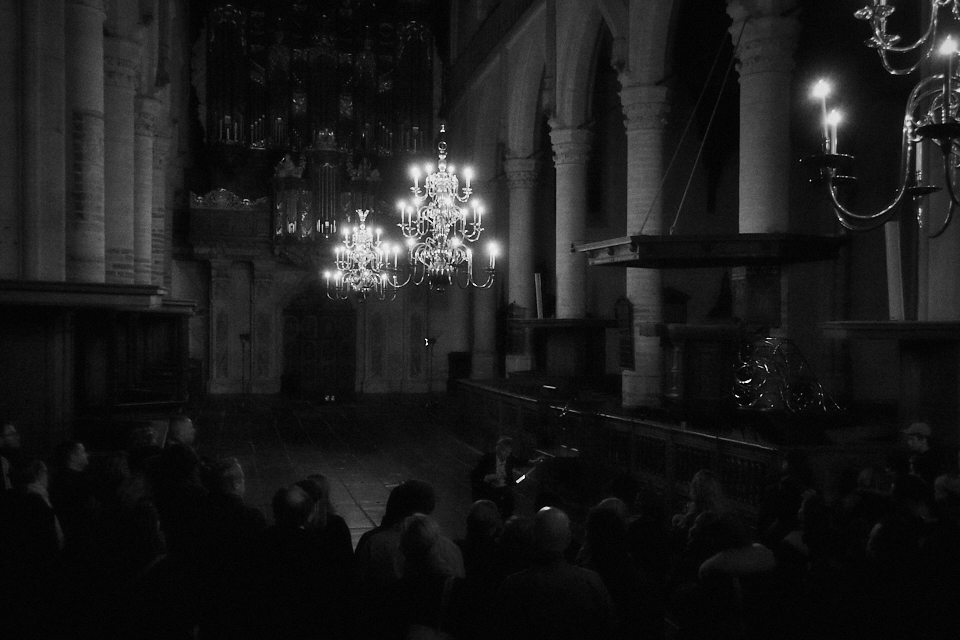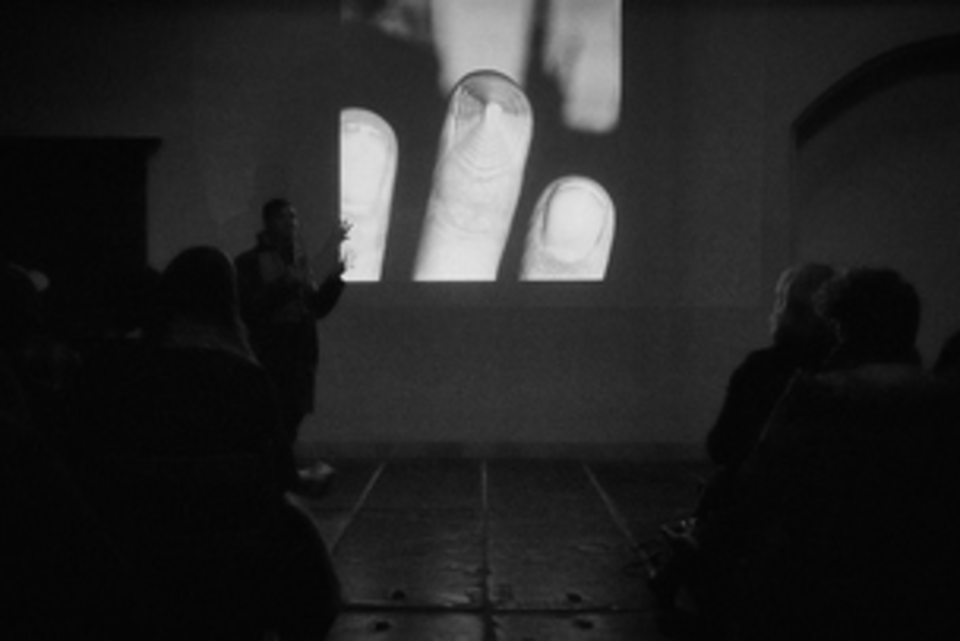Welcomed by the instrument of troubled dreams, we are surrounded by its polyphonic sounds. Like water, it resists to take form. Imagine walking into the same church when it was filled with organs, decorative statues and 38 altars, where the many devotees whispered their wishes.
Time here seems inverted too, during the longest night of the year, when anything might, even should, happen. This church turned from Catholic to Protestant I am told. Since the rise of puritanism we have been in inclined, in the West, to stress the solemn and strict character of ritual. Luckily, this sacralized inverted ship has not forgotten its roman rumors and sailor stories. Wise elders preached churchgoers to keep their hearts pure, while Fishermen had their broken nets and hearts mended by local women. Its fluid history immerses us, resonating in all that happens here today.
Somebody whispers, “I don’t know.”
Stone
Wood
Nails
Gold
Glass
I have memories of long Sunday sermons from my childhood. A time when church was grey, like concrete. A time when church always sounded the same. A time when I tried to count the number of organ pipes and never succeeded. A time when church certainly was not the space where one presented their nails painted with the portraits of Dutch writers, or “Tyra Banks is crazy.” At the entrance we each got an excerpt of text painted onto one nail. As we attempt to decipher what it reads, we are told that it’s part of the darkest page of the artist’s diary. Leaving one’s confessions onto other people’s nails seems like a fitting form of revival.
I forget my bag in the St. Sebastian chapel and run back to get it while the church turns dark. All that remains are the blue lights of a self-made armor that seems to be a portable instrument. Walking back I see the group of people solemnly standing around the invisible being. I can’t resist walking away from the group for a moment to take in the darkness of solstice in this oh so fitting scene of a centuries-old church. While darkness often equals absence, here it gives space to a myriad of acoustics. A singing saw, organ music, echoes, self-constructed soundscapes. A flowing sensation as we gather and move in waves from one space to the next.
Footsteps.
There is an undeniable pleasure that golden chandeliers offer. The woman standing beneath one takes off her coat while she tells us that she has to choose between being cold or fashionable. A traditional Dutch dilemma. After speaking about the rotation of the earth, using the chandelier as the sun, she takes out her phone and calls the organ player, “We are ready now.” At the same time, the dervish dancer begins rotating around his axe, seemingly effortlessly, beneath the chandelier sun.
Round and round and round and round
and round and round and round and round.
I want it to go on
and on and on
and on and on
and on and on and on and on
When the organ player stops playing only the slight steps of the dancer remain audible, as if everything else is holding its breath. Sometimes repetition of ritual can be as dull as my childhood memory of Sunday sermons, sometimes it contains swooshing twirling steps and an eternally whirling skirt, hallucinating us into a temporary suspension of our burning questions and engaging our senses in ways that are bewildering.
The silence is bursting.
I remember a dream: I was swept up by a large wave, further and further up. I couldn’t breathe. High up in the air there was a beautiful view and I wanted to stay there, so I tried to fly by moving my arms up and down really fast. This did not work. I fell down, back into the water. I started swimming and encountered an octopus. It approached me. I said something along the lines of “well hello.” Then it swung its tentacles all around me and started a kind of ritual dance with me in the water. I was sure to drown, but somehow I continued breathing while dancing in the octopus’s arms.
This Revival is a silent resurrection. Not restraint, no. An abundant silence. Questions without answers, such as in the story about Ene, who travelled to Europe to find greener pastures, but was denied, as she failed to provide evidence for who she was. What truth do you need? Afterlife, is it really the end? Or is it just an escape from the universe where all the traumas, all the pains, all the heartbreaks and rejections, all go away?
Site- specific singers chase their echoes through a wondering audience. I suddenly realize how well suited this space — usually demanding quiet — is for running and howling. The echo is and yet isn’t at the same time. It reflects right back to us without ever materializing. The echo does not merely repeat, it emphasizes, amplifies, deforms. What else better captures the sense of awe, an intense form of wonder, that makes people feel physically smaller than they are? It is no accident that places of worship often exaggerate these feelings. Like a tiny figure, hanging onto a gigantic solar powered balloon in the desert. I recognize this desert; I was there five years ago. It is so incredibly white and wide, I understand the need for weightlessness. The artist is said to live with 200 spiders in Berlin (or the other way around).
The person announced as a fashion designer sits in the middle of the church playing a singing saw. Or I may have misunderstood. Either way, rather than a catwalk, we are shivered into shrieking tones. Then the church turns dark. Everyone is asked to walk toward the back where a slight light invites us to approach. A figure stands behind the intricately decorated fence. I sit down on the cold stone floor and stop taking notes, as it feels inappropriate to write on my phone when a black angel sings.
Lost & Found, The Revival in order of appearance:
Frédérique Olthuis, Nail art
Janet Cardiff and George Bures Miller, The Instrument of Troubled Dreams
Astrit Ismaili, The New Body
Miyuki Inoue, Site-Specific Singing
Tchelet Pearl Weisstub
Tyna Adebowale, For Ene (Ofoni)
Tomás Saraceno, Aerocene, Launches at White Sands, New Mexico Unites States, 2016
Ninamounah
Bahghi Yemane, His Eye Is On The Sparrow
